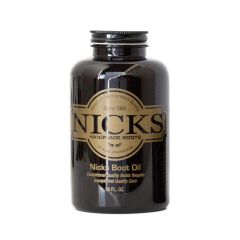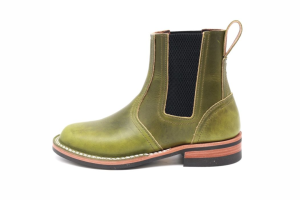How To Clean Work Boots

Wondering how to clean work boots? At some point you will want to. After all, they can get caked with dirt, dust, oil, and other substances until you're told that they stay outside or you do with them on!
Additionally, the occasional cleaning is good for the leather.
However, it's not as simple as hosing them down, which would actually be bad for them. Instead, how to wash work boots inside and out takes some care to ensure that they don't get damaged. It isn't too hard, but remember that your work boots are an investment in your comfort and safety. Take care of them, and they'll take care of you.
How To Clean Work Boots: The Outside
The first step in how to clean work boots is the outside of the boot. There are a few different methods.
For a light cleaning, a moderately damp brush or cloth will wipe away dust and some dirt fairly well. It's also a good idea to use an old toothbrush on the welt, as it will be easier to get to that way.
For incredibly dirty boots, you're going to need a little more cleaning power, however. That's where a leather cleaning product comes in handy.
Try getting as much caked-on dirt and grime off as possible before applying a leather cleaning product. That will make the process easier.
Leather cleaning products should not be petroleum products, as they can adversely impact the leather. Instead, a plant oil-based leather cleaner or better yet, saddle soap should be used.
Liquid spray leather cleaners are applied just like any cleaning solution. Spray on, and wipe and brush away any dirt or grime until the leather is totally cleaned. For caked-on gunk, you may want to spray it on and let it soak for a minute or two.
Saddle soap is a mild natural soap that's blended with leather conditioning ingredients, including natural compounds like beeswax or lanolin. It comes in a soft, waxy puck, usually in a shoe polish tin. You use it by wetting a lightly damp (and clean!) brush or cloth, and - using a circular motion - work up a foamy lather on the surface of the saddle soap.
Then, you apply it with the brush or cloth in a circular motion. Work the lather into the boot surface, applying more as needed. Wipe away the lather with a clean cloth. Just as with a leather cleaner, you may need a few applications to wholly clean your boots.
When they're clean, wipe away any remaining lather or cleaner. The bonus with saddle soap is that it also nourishes and moisturizes the leather as well as cleaning it, so it's a great product to have for boot care. Let your work boots air-dry, as heating them can dehydrate and crack the leather.
How To Clean Work Boots: Insoles And Insides
Of course, you'll also want to pay attention to your insoles and the footbed, as this step in how to clean work boots will prevent them from developing...we'll say a rich, musty aroma.
It's okay to like limburger cheese. It's not okay for your boots to let everyone know what it smells like, after all.
How is that done? Easily, but with care. Granted, this step will require air-drying at least overnight, so it's best to do this before a day off or the weekend for thorough drying.
The first step is to take out the insoles. Wash them in the washing machine with a mild detergent, or - preferably - by hand with a mild, low-pH shampoo. In either case, air dry.
The interior of the boot should be washed with a damp cloth and a low-pH shampoo. After the smell is gone, use a cloth dampened only with water and blot up any shampoo residue. Use a dry cloth to wipe out as much moisture as possible.
After the interior is washed, air dry with a boot tree or by any method possible of suspending your work boots upside down. Again, air drying is crucial as applying heat to the interior stitching can have a detrimental effect.
Use deodorant sprays or powder with your boots. A daily application takes only seconds, and can help cut down on accumulation of salts and acid from sweat, dead skin and odors.
After the interior has been washed as well as the interior, it's time to condition the leather.
Conditioning Your Leather Work Boots

After boots have been cleaned, it's imperative that leather work boots have some conditioning applied to them, such as Nick's Leather Oil or another natural leather conditioner. Again, avoid petroleum products; stick to natural compounds that help to nourish and protect leather.
Allow your boots to dry thoroughly before applying.
Work the conditioner into the leather by wiping it down with your nourishing compound. Take care to wipe away the excess, but give it a good wiping down with it. It's also a good idea to use an old toothbrush to hit the welt along the edge of the boot, as this critical area needs attending to just as much as the rest of the boot does.
Leather oil like Nick's Leather Oil will help moisturize the leather, to prevent drying and cracking, as well as provide a water-resistant barrier to keep moisture out. You can also buff it to give your leather work boots a shine, if so desired. This crucial step also helps guard leather boots against damage from the sun as well as the other elements, and keep your boots in good working condition for years to come.
Take care of your boots, and they will take care of you.








